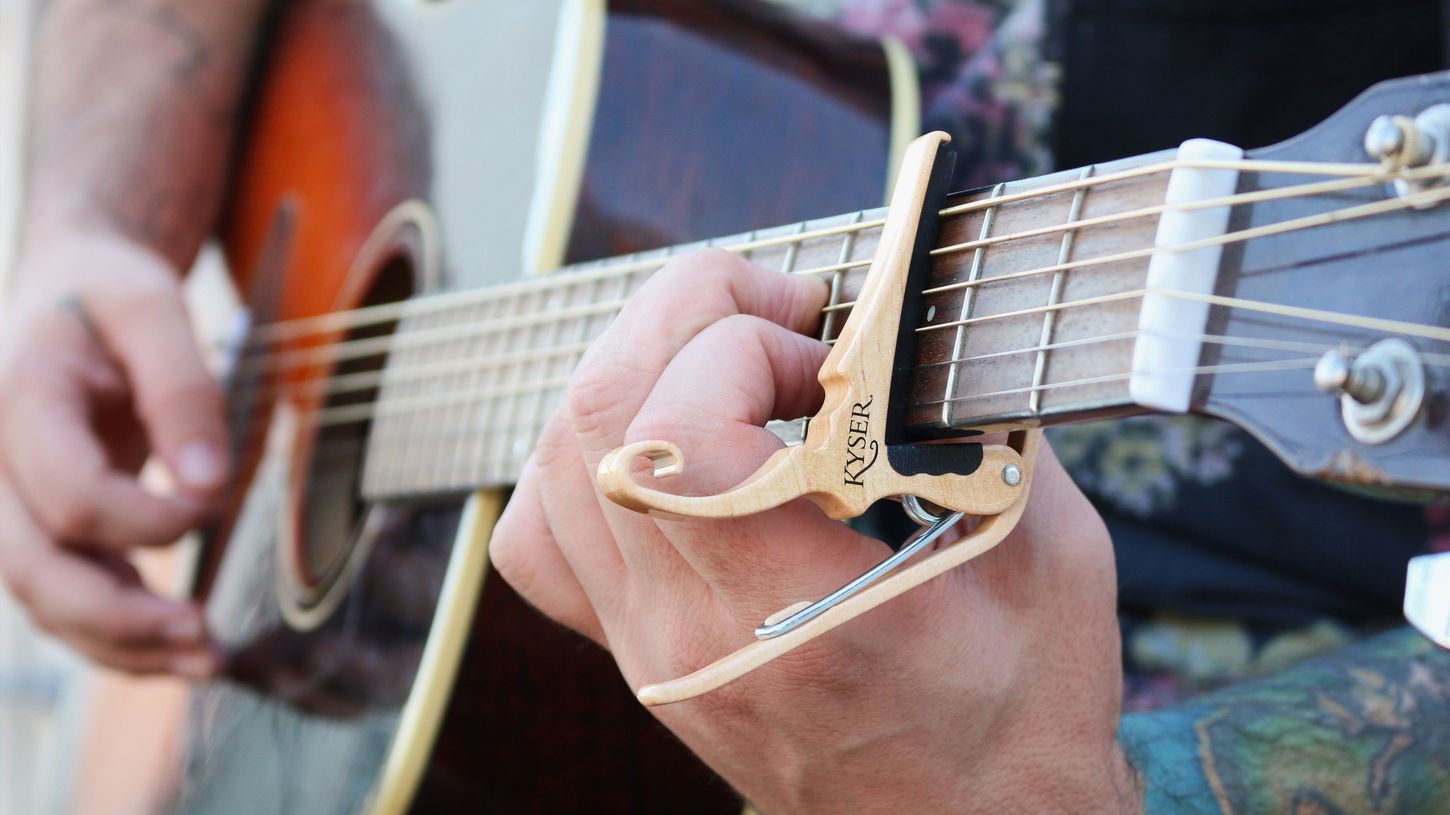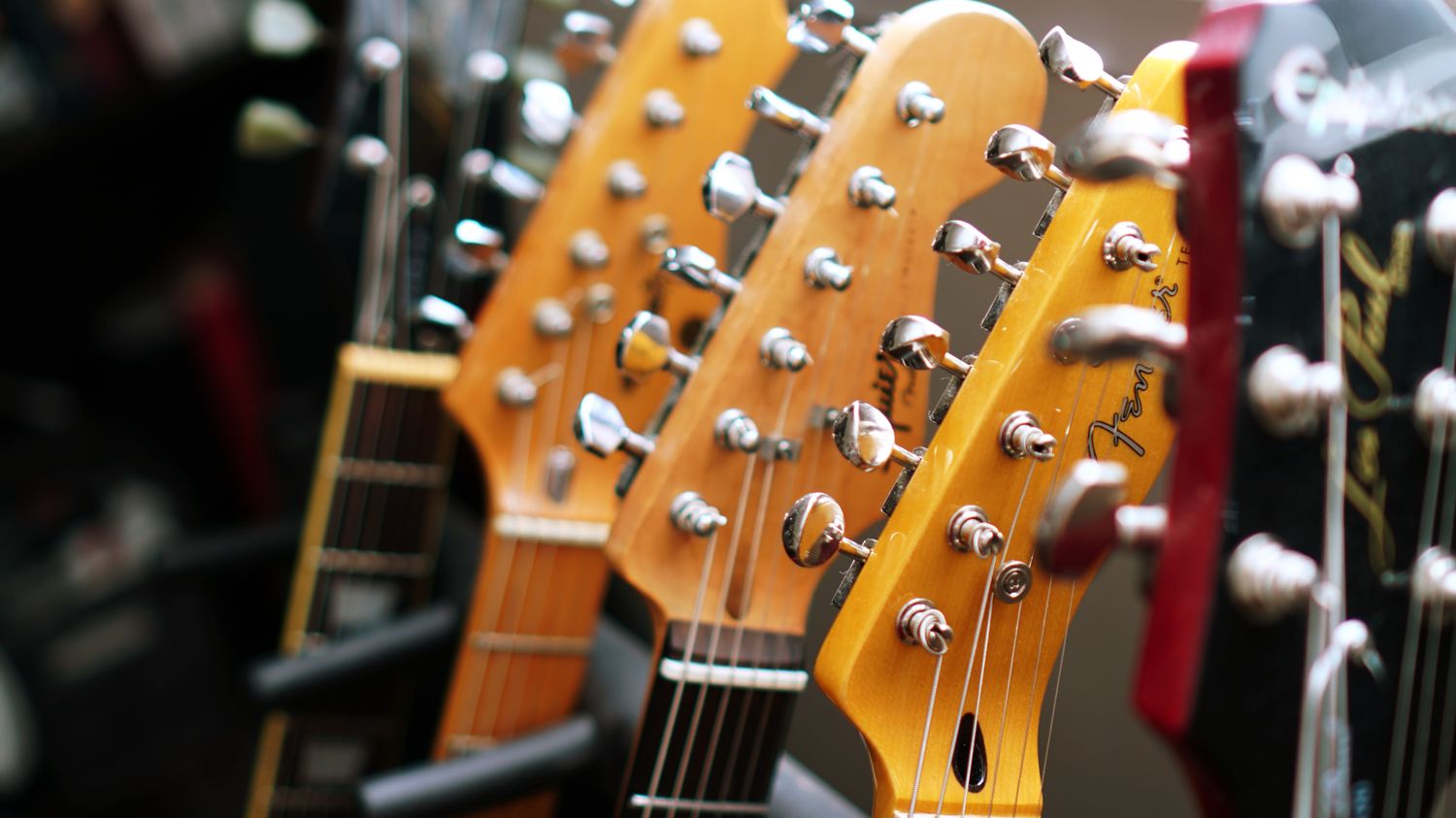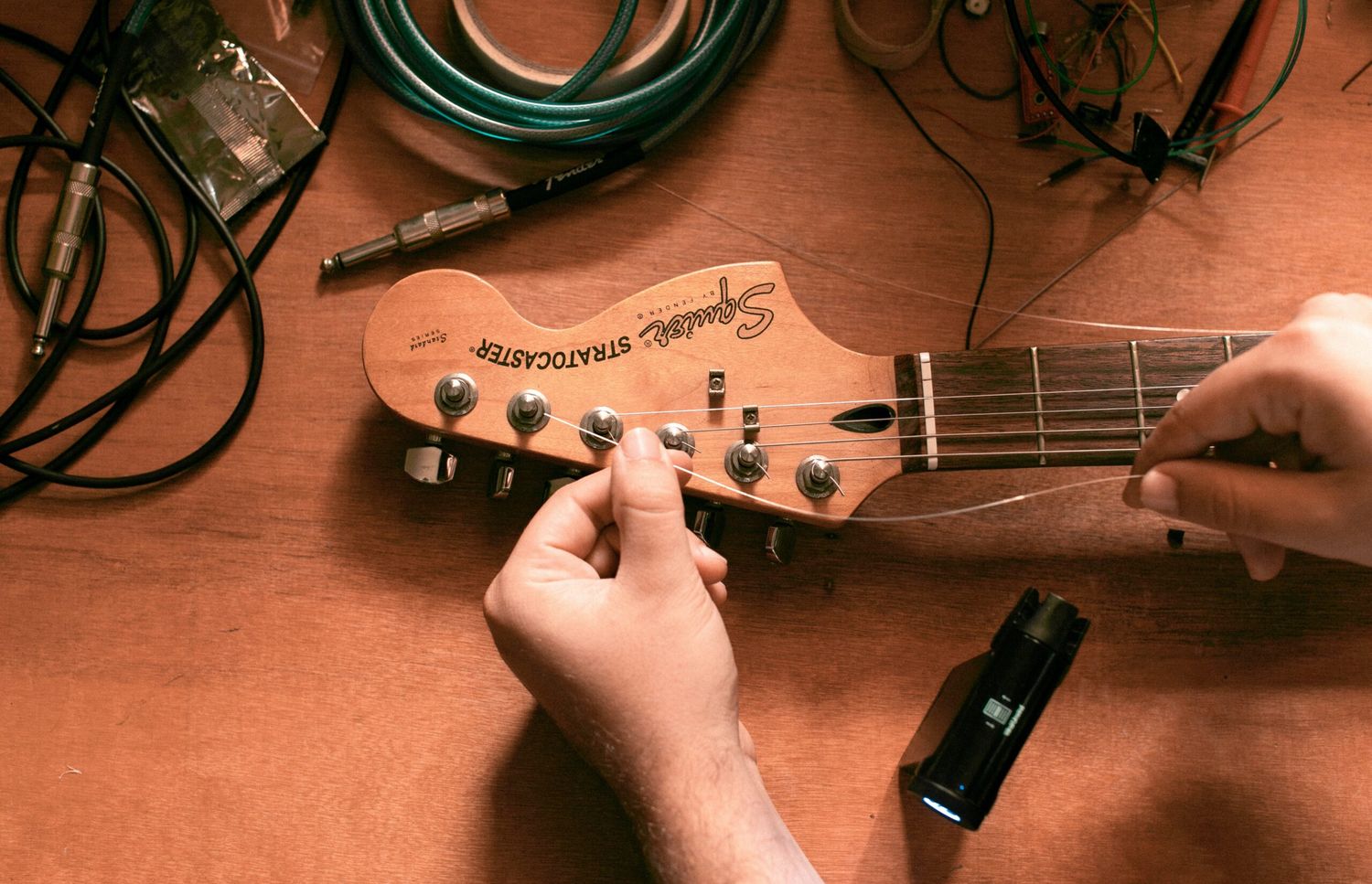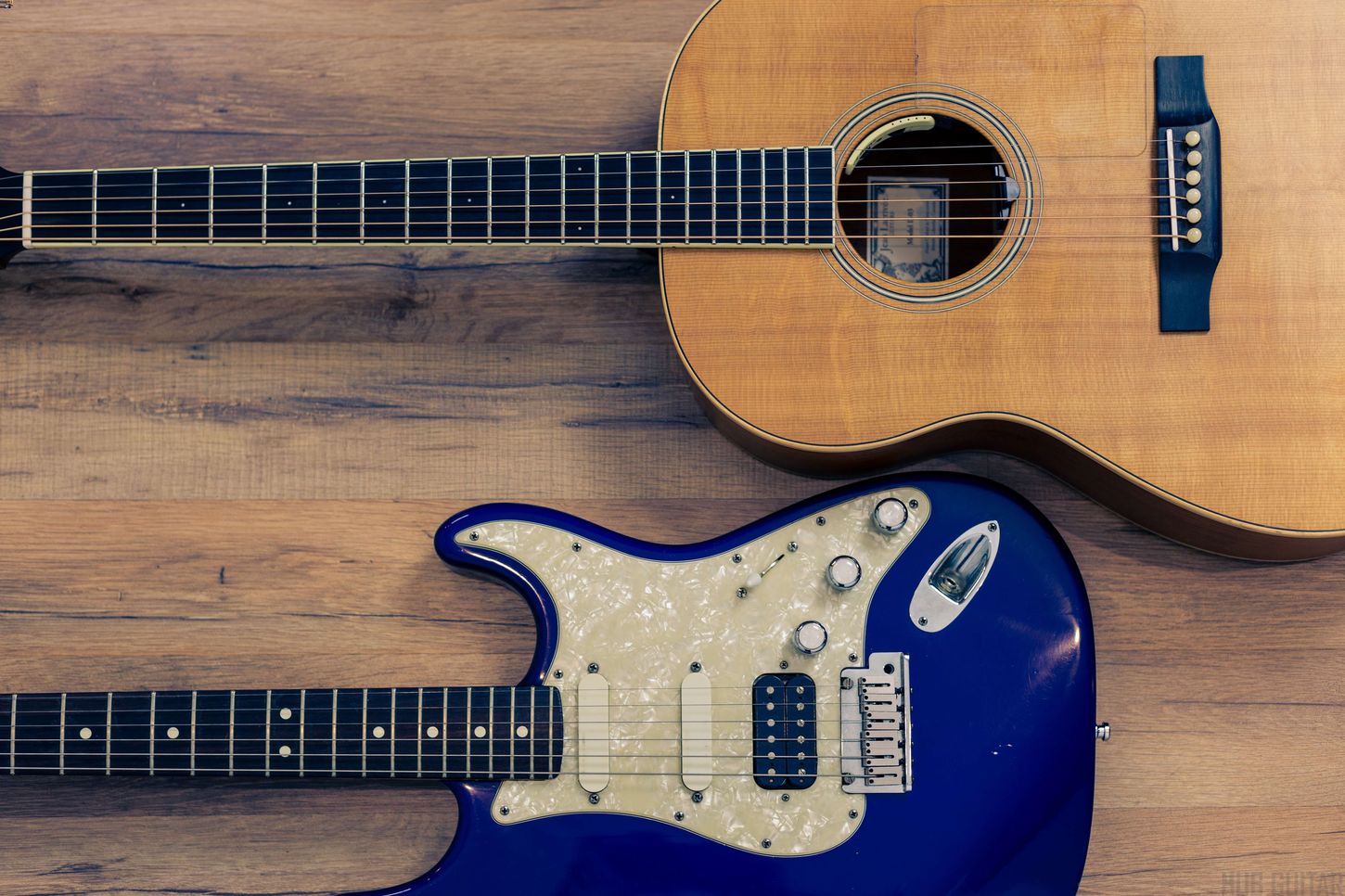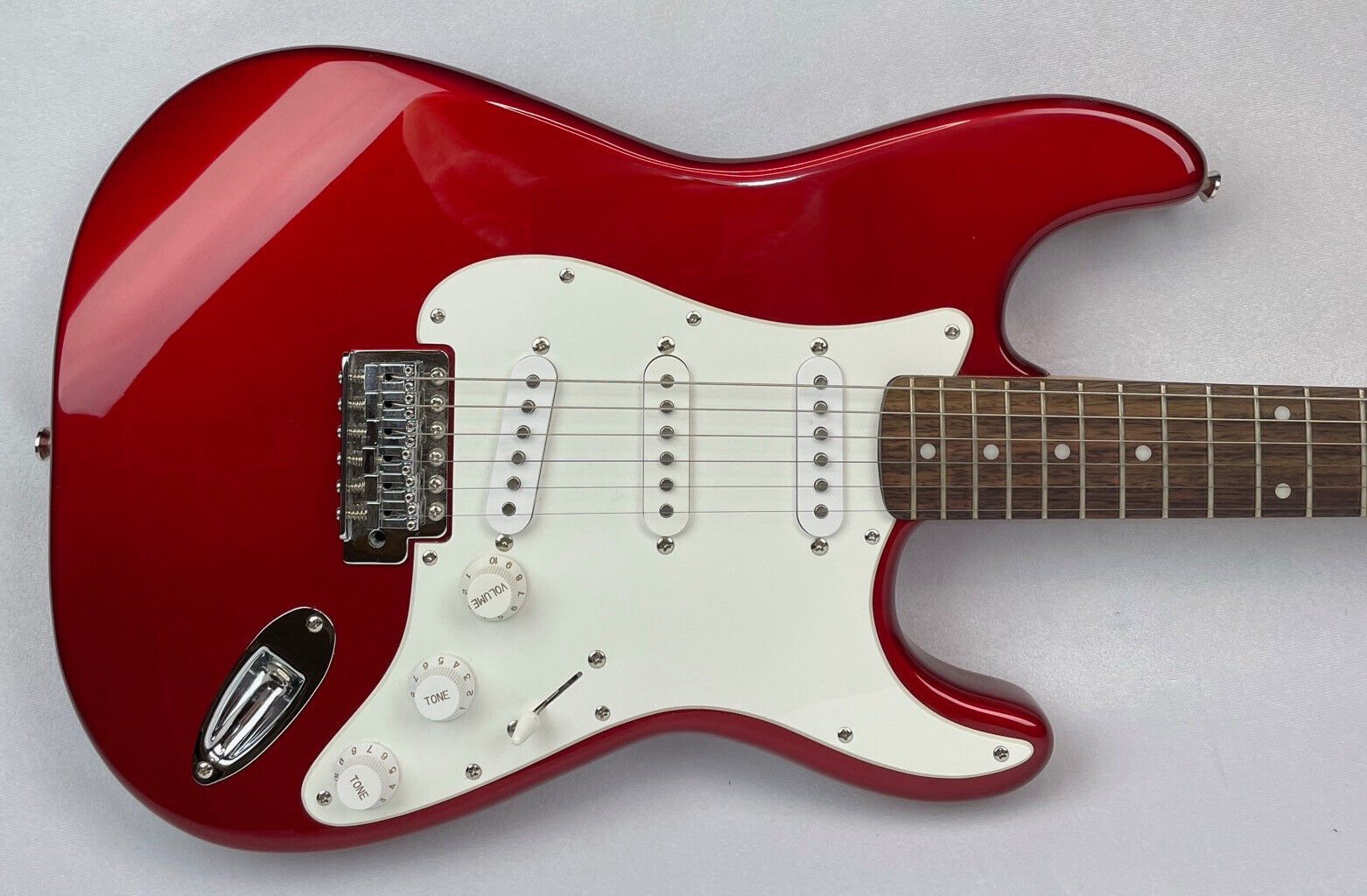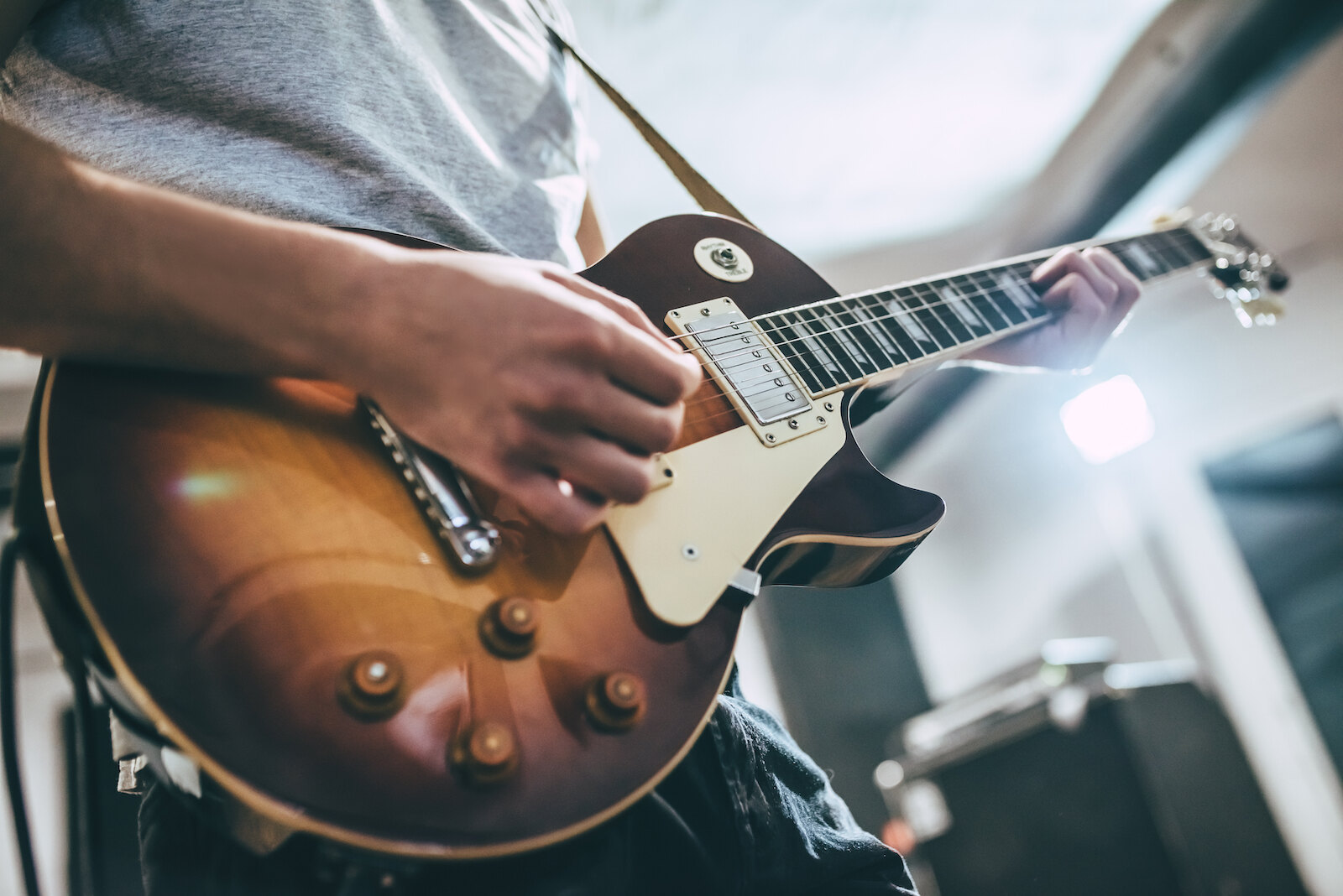Home>Production & Technology>Acoustic>How To Use An Electric Acoustic Guitar
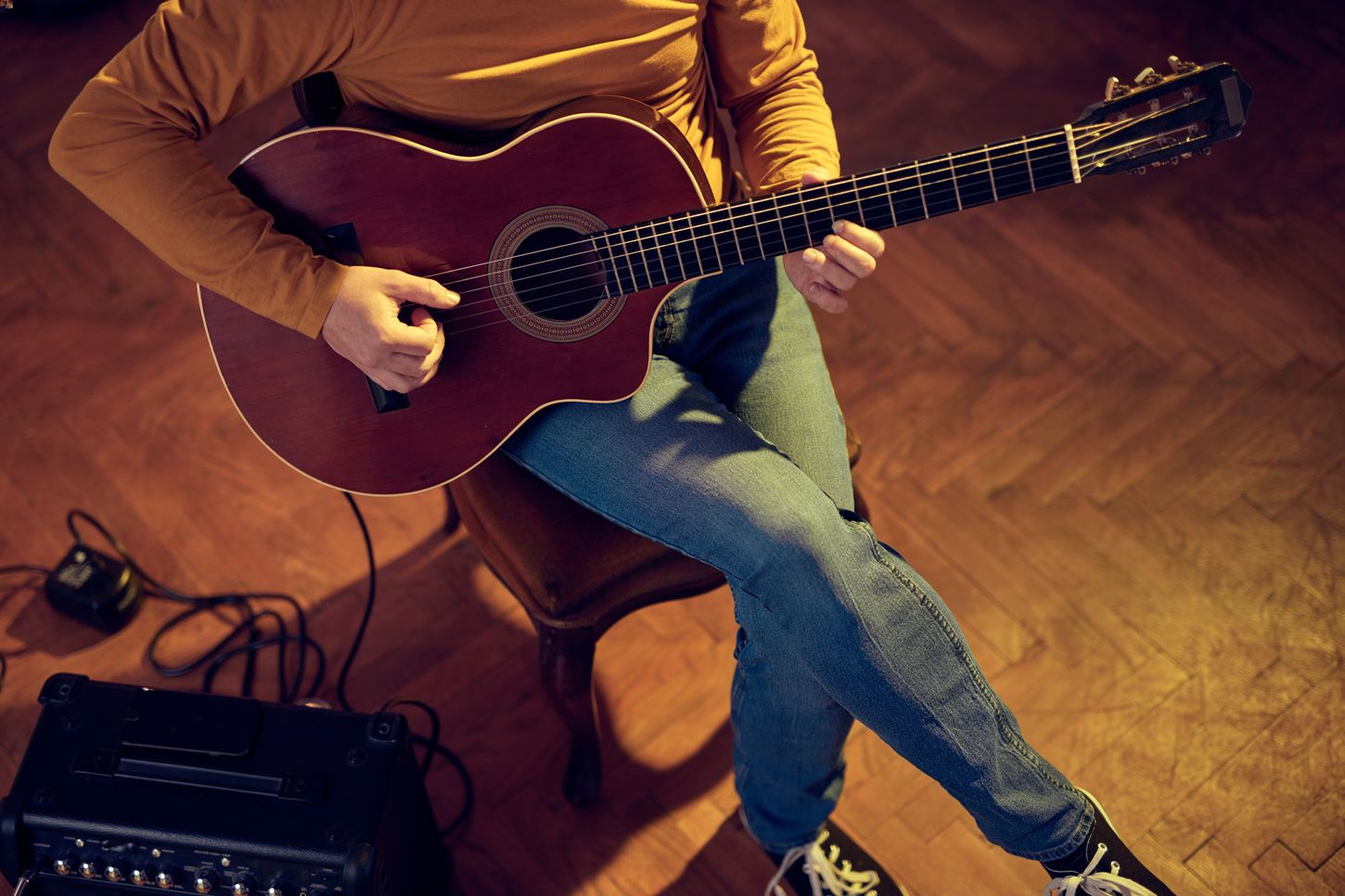

Acoustic
How To Use An Electric Acoustic Guitar
Published: March 11, 2024
Learn how to use an electric acoustic guitar with our comprehensive guide. Discover tips, techniques, and more for mastering the acoustic guitar.
(Many of the links in this article redirect to a specific reviewed product. Your purchase of these products through affiliate links helps to generate commission for AudioLover.com, at no extra cost. Learn more)
Table of Contents
Introduction
An electric acoustic guitar is a versatile and dynamic instrument that combines the rich, resonant tones of an acoustic guitar with the amplified power of an electric guitar. Whether you're a seasoned musician or a budding enthusiast, understanding how to harness the full potential of an electric acoustic guitar can significantly elevate your musical journey.
The beauty of an electric acoustic guitar lies in its ability to seamlessly transition between intimate acoustic performances and electrifying amplified shows. By incorporating advanced electronics and innovative design, electric acoustic guitars offer a wide range of sonic possibilities, making them a popular choice among musicians across various genres.
In this comprehensive guide, we will delve into the intricacies of using an electric acoustic guitar, from selecting the right instrument to mastering its controls and features. We will explore the process of connecting your guitar to an amplifier or PA system, as well as incorporating effects and pedals to enhance your sound. Additionally, we will provide valuable tips for playing and performing with an electric acoustic guitar, along with essential maintenance practices to ensure the longevity of your instrument.
Whether you're drawn to the raw, organic sound of an acoustic guitar or the amplified prowess of an electric guitar, the electric acoustic guitar offers the best of both worlds. With its unique blend of acoustic warmth and electric versatility, this instrument opens up a world of creative possibilities, allowing you to express your musical artistry with depth and nuance.
As we embark on this exploration of the electric acoustic guitar, prepare to unlock the full potential of your instrument and embark on a musical journey filled with innovation, expression, and boundless creativity. Let's dive into the realm of electric acoustic guitars and discover the myriad ways to harness their power and beauty.
Choosing the Right Electric Acoustic Guitar
When embarking on the journey of selecting an electric acoustic guitar, it's essential to consider various factors to ensure that the instrument aligns with your musical preferences and playing style. The market offers a diverse array of electric acoustic guitars, each with its unique characteristics, tonal qualities, and design features. Here's a comprehensive guide to help you navigate the process of choosing the perfect electric acoustic guitar for your musical endeavors.
Consider Your Musical Style
The first step in selecting an electric acoustic guitar is to consider the musical genres and styles you intend to explore. Whether you're drawn to the soulful melodies of folk music, the intricate fingerstyle techniques of classical guitar, or the vibrant rhythms of pop and rock, different electric acoustic guitars are tailored to complement specific musical genres. Understanding your musical style will guide you in choosing a guitar that resonates with the sonic characteristics and tonal nuances required for your preferred genres.
Body Style and Size
Electric acoustic guitars are available in various body styles, each offering distinct tonal properties and ergonomic considerations. From the classic dreadnought and concert shapes to the sleek grand auditorium and orchestra models, the body style significantly influences the guitar's projection, resonance, and comfort during extended playing sessions. Additionally, considering the size and scale length of the guitar is crucial, especially if you prioritize playability and ease of fretting complex chords and melodies.
Electronics and Pickup Systems
One of the defining features of an electric acoustic guitar is its built-in electronics and pickup systems, which enable seamless amplification and signal processing. When choosing an electric acoustic guitar, it's essential to evaluate the quality and versatility of the onboard electronics, including the type of pickups, preamp configurations, and tone shaping controls. Whether you prefer the warmth of traditional piezo pickups or the dynamic range of advanced transducer systems, selecting a guitar with high-quality electronics is paramount for achieving a captivating amplified sound.
Build Quality and Materials
The construction and materials used in crafting an electric acoustic guitar greatly influence its overall tonal character, durability, and aesthetic appeal. Assessing the build quality, tonewoods, and craftsmanship of the guitar is crucial in determining its sonic resonance, structural integrity, and visual allure. Whether you prioritize the rich warmth of mahogany, the bright articulation of spruce, or the exotic allure of koa and rosewood, the choice of tonewoods contributes to the guitar's sonic fingerprint and aesthetic charm.
Playability and Comfort
Beyond tonal considerations, the playability and comfort of an electric acoustic guitar significantly impact your overall musical experience. Factors such as neck profile, fretboard radius, and string action play a pivotal role in determining the guitar's ease of play, facilitating smooth chord transitions, fluid soloing, and extended performance sessions. Prioritizing a guitar that offers exceptional playability and ergonomic comfort ensures that you can fully immerse yourself in the music without hindrances or discomfort.
Personal Connection and Inspiration
Ultimately, choosing the right electric acoustic guitar is a deeply personal endeavor that transcends technical specifications and features. It's essential to establish a profound connection with the instrument, feeling inspired and invigorated by its sonic character, aesthetic allure, and tactile responsiveness. Whether it's the captivating resonance of a particular model, the visual elegance of its design, or the emotional connection forged through playing, selecting an electric acoustic guitar that resonates with your musical spirit is paramount in nurturing a profound and enduring musical journey.
In the quest for the perfect electric acoustic guitar, embracing the synergy of technical considerations and personal resonance empowers you to discover an instrument that not only meets your musical requirements but also ignites your passion for creativity and expression. By carefully evaluating the musical style, body style, electronics, build quality, playability, and personal connection, you can embark on a harmonious partnership with an electric acoustic guitar that becomes an extension of your musical identity, empowering you to explore new horizons and craft captivating sonic narratives.
Understanding the Controls and Features
Understanding the controls and features of an electric acoustic guitar is essential for unlocking its full sonic potential and versatility. These instruments are equipped with a range of onboard electronics and hardware that allow for precise tonal shaping, seamless amplification, and dynamic performance capabilities. By delving into the intricacies of the controls and features, musicians can harness the expressive power of their electric acoustic guitars with confidence and creativity.
Onboard Preamp and EQ Controls
The onboard preamp serves as the nerve center of an electric acoustic guitar's electronic system, providing essential functions for signal amplification and tonal sculpting. Typically, the preamp features volume controls for adjusting the output level, allowing musicians to achieve the desired balance between the guitar's acoustic resonance and amplified sound. Additionally, many electric acoustic guitars are equipped with built-in equalizer (EQ) controls, enabling precise manipulation of the instrument's tonal characteristics. The EQ controls, often represented by sliders or knobs, allow for adjustments in bass, midrange, and treble frequencies, empowering musicians to tailor the guitar's sonic profile to suit different playing environments and musical styles.
Pickup Selection and Blending Options
Electric acoustic guitars are equipped with various pickup systems, each offering distinct tonal qualities and response characteristics. Common pickup configurations include under-saddle piezo pickups, soundboard transducers, and internal microphones, each capturing different aspects of the guitar's acoustic resonance. Understanding the pickup selection and blending options allows musicians to explore a diverse range of tonal textures and sonic nuances. Some electric acoustic guitars feature blending controls that enable seamless mixing of multiple pickups, providing a customizable sonic palette that adapts to different performance scenarios and sound reinforcement requirements.
Built-in Tuner and Feedback Control
Many modern electric acoustic guitars are equipped with a built-in tuner, offering convenience and accuracy for on-the-fly tuning adjustments. The onboard tuner allows musicians to maintain precise pitch and intonation without the need for external tuning devices, ensuring that the guitar remains in optimal playing condition at all times. Additionally, electric acoustic guitars often incorporate feedback control mechanisms to mitigate unwanted resonance and acoustic feedback during amplified performances. These feedback control features enhance the instrument's stability and reliability in live settings, allowing musicians to deliver polished and articulate performances without interference from environmental sound issues.
Integrated Effects and Signal Processing
Innovative electric acoustic guitars may integrate onboard effects and signal processing capabilities, expanding the sonic palette and creative potential of the instrument. From lush reverbs and ambient delays to expressive modulation effects and dynamic compression, built-in effects empower musicians to infuse their performances with captivating sonic textures and spatial depth. Furthermore, some electric acoustic guitars offer direct signal processing options, allowing for seamless integration with external effects pedals, amplifiers, and recording devices, thereby facilitating a versatile and adaptable sonic platform for musical exploration and expression.
Seamless Integration with External Gear
Understanding the controls and features of an electric acoustic guitar extends to its seamless integration with external amplifiers, PA systems, and recording equipment. These instruments are designed to interface effortlessly with a wide range of audio devices, offering connectivity options such as balanced XLR outputs, line-level inputs, and onboard DI (direct injection) capabilities. By leveraging these integration features, musicians can achieve optimal signal routing, impedance matching, and signal conditioning, ensuring that the guitar's amplified sound retains its fidelity and character across diverse performance and recording scenarios.
In essence, comprehending the controls and features of an electric acoustic guitar empowers musicians to sculpt their sonic identity, navigate diverse performance environments, and unleash their creative potential with precision and artistry. By mastering the intricacies of the onboard preamp, pickup systems, tuning and feedback controls, integrated effects, and seamless integration capabilities, musicians can embark on a musical journey filled with expressive possibilities and captivating sonic landscapes. The controls and features of an electric acoustic guitar serve as a gateway to boundless creativity, enabling musicians to shape their musical narratives with clarity, depth, and resonance.
Connecting to an Amplifier or PA System
Connecting an electric acoustic guitar to an amplifier or PA system is a pivotal step in unleashing its amplified potential and sharing your music with a wider audience. Whether you're performing on stage, recording in a studio, or simply seeking to amplify your practice sessions, understanding the process of connecting your electric acoustic guitar to external audio equipment is essential for achieving optimal sound quality and projection.
Selecting the Right Cables and Connections
The first consideration when connecting your electric acoustic guitar to an amplifier or PA system is selecting the appropriate cables and connections. Most electric acoustic guitars feature a standard 1/4-inch output jack, which serves as the primary interface for transmitting the instrument's signal to external audio devices. It's crucial to use high-quality instrument cables with reliable shielding and durable connectors to ensure a secure and noise-free connection. Additionally, understanding the signal flow and impedance matching between the guitar, cables, and audio equipment is essential for preserving the integrity and fidelity of the amplified sound.
Utilizing Direct Boxes and DI Outputs
In scenarios where long cable runs or complex signal routing are involved, utilizing direct boxes (DI boxes) or the guitar's onboard DI outputs can significantly enhance the signal integrity and noise immunity. DI boxes serve as impedance-matching devices, converting the high-impedance signal from the guitar into a balanced, low-impedance signal suitable for long cable runs and interfacing with professional audio equipment. Many electric acoustic guitars are equipped with built-in DI outputs, offering a direct and optimized signal path for connecting to mixers, audio interfaces, and recording consoles.
Understanding Amplifier and PA System Inputs
When connecting your electric acoustic guitar to an amplifier or PA system, it's essential to understand the input options and signal processing capabilities of the audio equipment. Amplifiers may feature dedicated instrument input channels with adjustable gain and tone controls, allowing for direct connection and tonal shaping tailored to the guitar's sonic characteristics. PA systems often offer a range of input options, including line-level inputs, microphone inputs, and dedicated instrument inputs, each requiring specific signal levels and impedance considerations for optimal performance.
Optimizing Signal Levels and EQ Settings
Before engaging in amplified performances or recording sessions, optimizing the signal levels and EQ settings is crucial for achieving a balanced and articulate sound. Adjusting the input gain on amplifiers or PA system channels ensures that the guitar's signal remains within the optimal operating range, preventing distortion or signal clipping. Additionally, utilizing the EQ controls on the amplifier or mixer allows for fine-tuning the guitar's tonal characteristics, tailoring the sound to suit the performance venue and sonic preferences.
Embracing the Amplified Experience
Connecting your electric acoustic guitar to an amplifier or PA system marks the transition from intimate acoustic resonance to expansive amplified expression. By mastering the art of signal connectivity, impedance matching, and tonal optimization, musicians can harness the full potential of their electric acoustic guitars, delivering captivating performances and sharing their musical narratives with clarity, depth, and resonance. Whether on stage, in the studio, or within the confines of your creative space, the process of connecting to an amplifier or PA system opens up a world of sonic possibilities, empowering you to amplify your voice and connect with audiences through the evocative power of music.
Using Effects and Pedals
Utilizing effects and pedals with an electric acoustic guitar introduces a realm of sonic exploration and expressive possibilities, allowing musicians to sculpt their sound with depth, texture, and dynamic character. Whether seeking to add ambient atmospheres, expressive modulation, or dynamic tonal shaping, understanding how to integrate effects and pedals into your electric acoustic guitar setup is essential for elevating your musical performances and compositions.
Selecting Compatible Effects
When incorporating effects and pedals with an electric acoustic guitar, it's crucial to select units that complement the instrument's tonal characteristics and amplification requirements. Certain effects, such as reverb, delay, and chorus, seamlessly enhance the guitar's natural resonance, adding spatial depth and emotive textures to the sound. Additionally, acoustic-specific effects pedals, including acoustic preamps, EQ pedals, and feedback suppressors, are tailored to optimize the amplified performance of electric acoustic guitars, offering precise tonal control and signal conditioning.
Signal Routing and Integration
Integrating effects and pedals into your electric acoustic guitar setup involves thoughtful signal routing and connectivity. Understanding the signal chain and placement of effects pedals is essential for achieving the desired sonic impact. Many musicians opt to place time-based effects, such as reverb and delay, at the end of the signal chain to impart a sense of spatial depth and dimension to the guitar's sound. Modulation effects, such as chorus and phaser, can be positioned before time-based effects to impart dynamic movement and expressive coloration to the guitar's tonal palette.
Amplification Considerations
When using effects and pedals with an electric acoustic guitar, it's important to consider the amplification method and signal processing requirements. Some effects pedals are designed for direct connection to amplifiers or PA systems, while others may benefit from dedicated acoustic preamps or DI boxes to optimize the signal integrity and tonal response. Understanding the interaction between effects pedals and the amplification system ensures that the guitar's amplified sound retains its fidelity and character, delivering a cohesive and immersive sonic experience to the audience.
Creative Expression and Artistic Vision
The integration of effects and pedals with an electric acoustic guitar transcends technical considerations, offering a canvas for creative expression and artistic vision. By experimenting with different effect combinations, parameter settings, and pedal configurations, musicians can craft evocative soundscapes, evoke emotional resonance, and imbue their performances with a captivating sonic identity. Whether seeking to evoke ethereal ambience, rhythmic pulsations, or dynamic swells, the judicious use of effects and pedals empowers musicians to shape their musical narratives with nuance, depth, and boundless creativity.
Evolving Musical Possibilities
As musicians delve into the realm of using effects and pedals with electric acoustic guitars, they embark on a journey of sonic discovery and artistic evolution. The fusion of acoustic warmth and electric versatility, coupled with the expressive potential of effects and pedals, opens up a myriad of musical possibilities, transcending traditional boundaries and inviting exploration beyond the confines of conventional tonal palettes. By embracing the symbiotic relationship between the instrument, effects, and pedals, musicians can embark on a sonic odyssey, continually pushing the boundaries of their musical expression and forging new pathways of creative innovation.
In essence, using effects and pedals with an electric acoustic guitar is a transformative and enriching experience, offering a tapestry of sonic textures, expressive nuances, and immersive tonal landscapes. By embracing the art of sonic sculpting and harnessing the evocative power of effects and pedals, musicians can elevate their musical endeavors, captivate audiences, and embark on a boundless journey of sonic exploration and artistic revelation.
Tips for Playing and Performing with an Electric Acoustic Guitar
Playing and performing with an electric acoustic guitar is a dynamic and immersive experience that invites musicians to explore the intersection of acoustic intimacy and amplified expression. Whether you're strumming soulful ballads in an intimate setting or commanding the stage with electrifying performances, mastering the art of playing and performing with an electric acoustic guitar requires a blend of technical proficiency, stage presence, and musical sensitivity. Here are essential tips to enhance your playing and performing prowess with this versatile instrument:
Embrace Dynamic Playing Techniques
Harness the expressive potential of your electric acoustic guitar by incorporating dynamic playing techniques. Explore the nuances of fingerstyle, alternate picking, and percussive strumming to imbue your performances with rhythmic vitality and tonal diversity. By mastering dynamic control and touch sensitivity, you can evoke a wide range of emotions and sonic textures, captivating your audience with the evocative power of your playing.
Engage with the Audience
When performing with an electric acoustic guitar, establishing a genuine connection with your audience is paramount. Embrace eye contact, interactive banter, and engaging stage presence to create a memorable and immersive experience for your listeners. Whether through heartfelt storytelling or spontaneous interactions, forging a personal connection with your audience elevates the impact of your performance, fostering a sense of shared musical journey and emotional resonance.
Optimize Soundcheck and Monitoring
Prior to your performance, allocate sufficient time for soundcheck and monitoring adjustments to ensure optimal sound quality and stage balance. Communicate effectively with the sound engineer or venue staff to articulate your sonic preferences and technical requirements. Pay attention to monitor mix clarity, instrument levels, and stage acoustics, allowing for a cohesive and immersive sonic experience during your performance.
Explore Versatile Playing Styles
Diversify your playing repertoire by exploring versatile styles and genres that showcase the expressive range of the electric acoustic guitar. Whether delving into folk-inspired fingerpicking, percussive tapping techniques, or contemporary rhythmic strumming patterns, embracing diverse playing styles expands your musical palette and captivates audiences with a tapestry of sonic textures and stylistic diversity.
Leverage Onboard Controls and Effects
Maximize the sonic potential of your electric acoustic guitar by leveraging onboard controls and effects to tailor your sound to different performance environments. Experiment with EQ settings, pickup blending options, and onboard effects to sculpt your tonal character and adapt to varying acoustics. Whether seeking pristine clarity, warm resonance, or ambient textures, harnessing the instrument's onboard capabilities enhances your sonic versatility and expressive finesse.
Prioritize Instrument Maintenance
Maintaining your electric acoustic guitar in optimal playing condition is essential for consistent performance quality and longevity. Regularly inspect and clean the instrument, monitor string condition, and address any technical issues promptly. Additionally, ensure proper storage and humidity control to preserve the tonal integrity and structural integrity of your guitar, safeguarding its resonance and playability for years to come.
Cultivate Musical Collaboration
Embrace collaborative opportunities with fellow musicians, vocalists, and instrumentalists to expand your artistic horizons and create compelling musical synergies. Whether participating in ensemble performances, jam sessions, or collaborative projects, cultivating musical collaboration fosters creativity, improvisational skills, and a sense of shared musical camaraderie, enriching your musical journey with diverse perspectives and collective creativity.
By incorporating these tips into your playing and performing approach, you can elevate your musical expression, captivate audiences, and embark on a fulfilling and resonant journey with your electric acoustic guitar. Whether in intimate acoustic settings or electrifying stage performances, these insights empower you to harness the full potential of your instrument, infusing your music with depth, emotion, and boundless creativity.
Maintenance and Care for Your Instrument
Proper maintenance and care are essential for preserving the pristine condition, optimal performance, and longevity of your electric acoustic guitar. By incorporating diligent maintenance practices into your routine, you can safeguard the instrument's tonal integrity, structural resilience, and aesthetic allure, ensuring that it remains a reliable and inspiring musical companion for years to come.
Regular Cleaning and Inspection
Initiate a regimen of regular cleaning and inspection to uphold the visual appeal and structural integrity of your electric acoustic guitar. Use a soft, lint-free cloth to gently wipe down the instrument, removing dust, fingerprints, and residue from the body, neck, and fretboard. Periodically inspect the frets, bridge, and tuning hardware for signs of wear, corrosion, or loose components, addressing any issues promptly to prevent further damage.
String Maintenance and Replacement
Monitor the condition of your guitar strings and replace them as needed to sustain optimal playability and tonal clarity. Regularly clean the strings after playing to remove accumulated oils and debris, preserving their tonal brightness and tactile responsiveness. When strings show signs of wear, tonal dullness, or physical damage, replace them with high-quality, compatible strings to maintain consistent sound quality and playing comfort.
Humidity Control and Storage
Maintain a stable environment for your electric acoustic guitar by controlling humidity levels and ensuring proper storage conditions. Fluctuations in humidity can impact the tonal stability and structural integrity of the instrument, potentially leading to warping, cracking, or diminished resonance. Store the guitar in a protective case or stand, away from direct sunlight, extreme temperatures, and rapid humidity changes, and consider using a humidifier or dehumidifier to regulate the ambient moisture levels.
Neck Adjustment and Setup
Periodically assess the neck relief, action height, and intonation of your electric acoustic guitar to ensure optimal playability and tonal balance. If necessary, consult a qualified luthier or guitar technician to perform neck adjustments, truss rod tweaks, and setup optimizations, addressing any fret buzz, intonation discrepancies, or playability concerns. A well-maintained and properly set up neck promotes comfortable fretting, smooth chord transitions, and consistent tonal articulation.
Protective Measures and Handling
Exercise caution and mindfulness when handling and transporting your electric acoustic guitar to prevent accidental damage or impact-related issues. Utilize a padded gig bag or hardshell case for secure transportation, minimizing the risk of dents, scratches, or structural trauma. When not in use, store the guitar in a safe and stable location, away from potential hazards and environmental stressors, safeguarding its physical integrity and cosmetic appeal.
By integrating these maintenance and care practices into your routine, you can nurture a profound and enduring relationship with your electric acoustic guitar, ensuring that it remains a steadfast source of inspiration, expression, and musical fulfillment. Embracing the responsibility of instrument stewardship empowers you to uphold the instrument's inherent beauty, sonic resonance, and artistic potential, fostering a harmonious partnership that transcends time and resonates with the essence of musical artistry.



